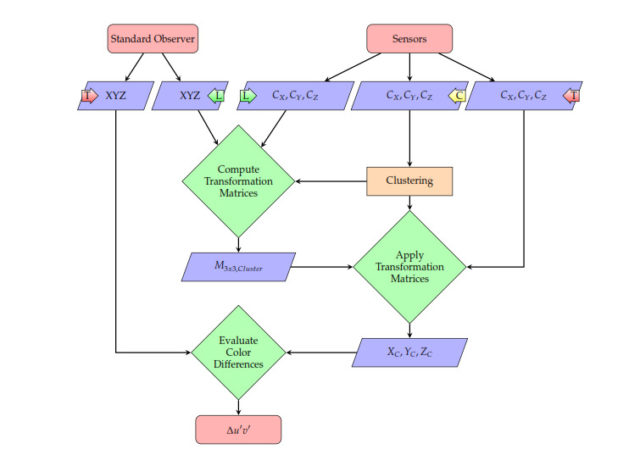Intelligent Systems for Interior Lighting and Color Sensors
Source: Myland, P., Babilon, S., Khanh, T.Q (2021) Tackling Heterogeneous Color Registration: Binning Color Sensors. DOI: 10.3390/s21092950 Sensors.
Myland, Babilon and Khanh in their comprehensive works explore Intelligent systems for interior lighting strive to balance economical, ecological, and health-related needs. For this objectives, they rely on sensors to assess and respond to the current room conditions. With an augmented demand for more dedicated control, the number of sensors used in parallel increases considerably. In this perspectives, the present work focuses on optical sensors with trilogy of spectral channels used to capture color-related information of the illumination conditions such as their chromaticities and correlated color temperatures. Furthermore, the following diagram depicts the cluster and its procedure of the new sensor binning approach that relates to Intelligent Systems of Interior Lighting and Color Sensors:

One major drawback of these devices, in particular toward intelligent lighting control, is that even same-type color sensors show production related differences in their color registration. Standard methods for color correction are either impractical for large-scale production or they result in large colorimetric errors. Therefore, this article depicts the feasibility of a novel sensor binning approach using the sensor responses to a single white light source for cluster assignment. A cluster specific color correction is shown to significantly reduce the registered color differences for a selection of test stimuli to values in ther ange of 0.003–0.008 Du. Its range are allowing the wide use of such sensors in practice and, at the same time, requires minimal additional effort in sensor commissioning.

Comments :